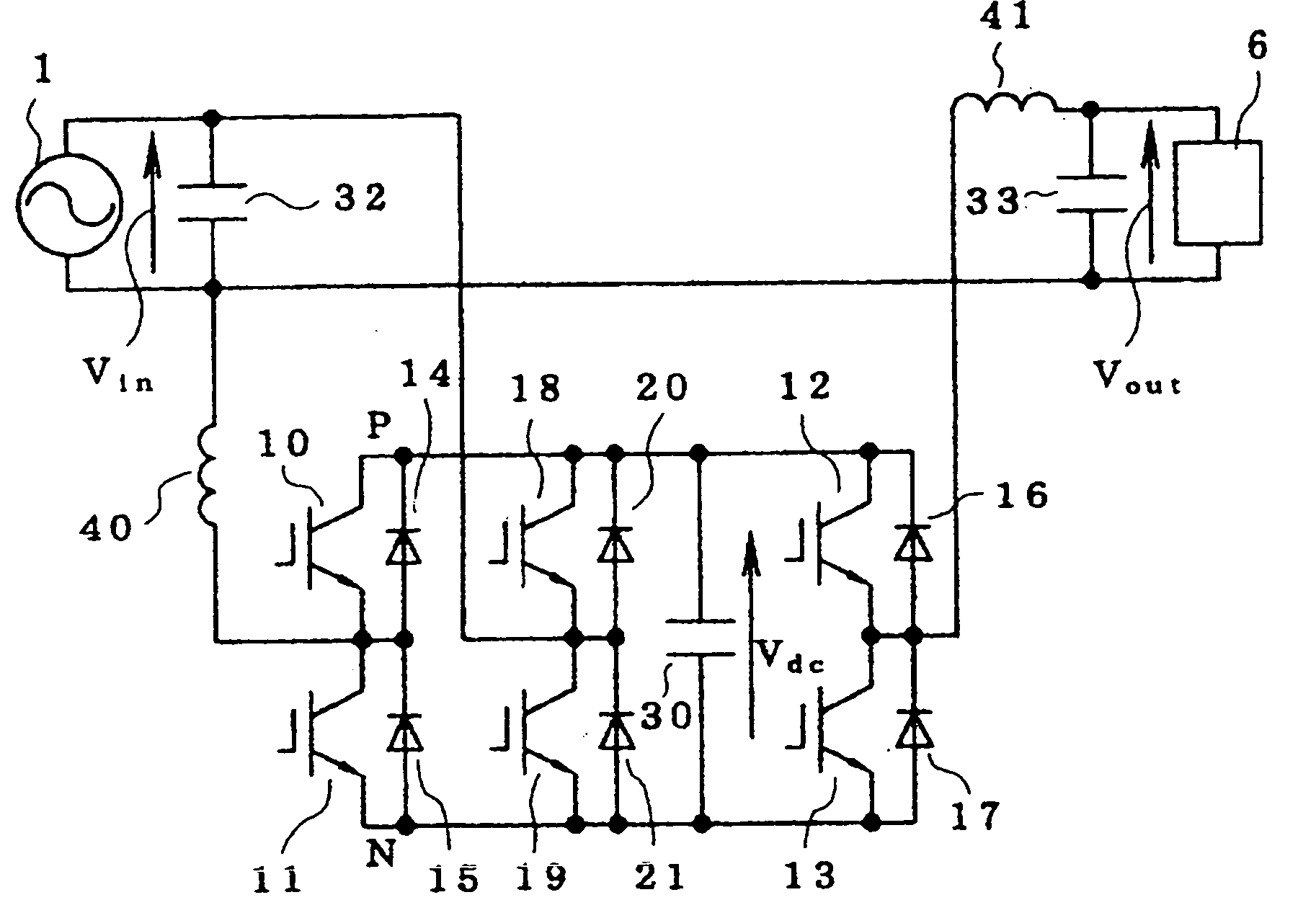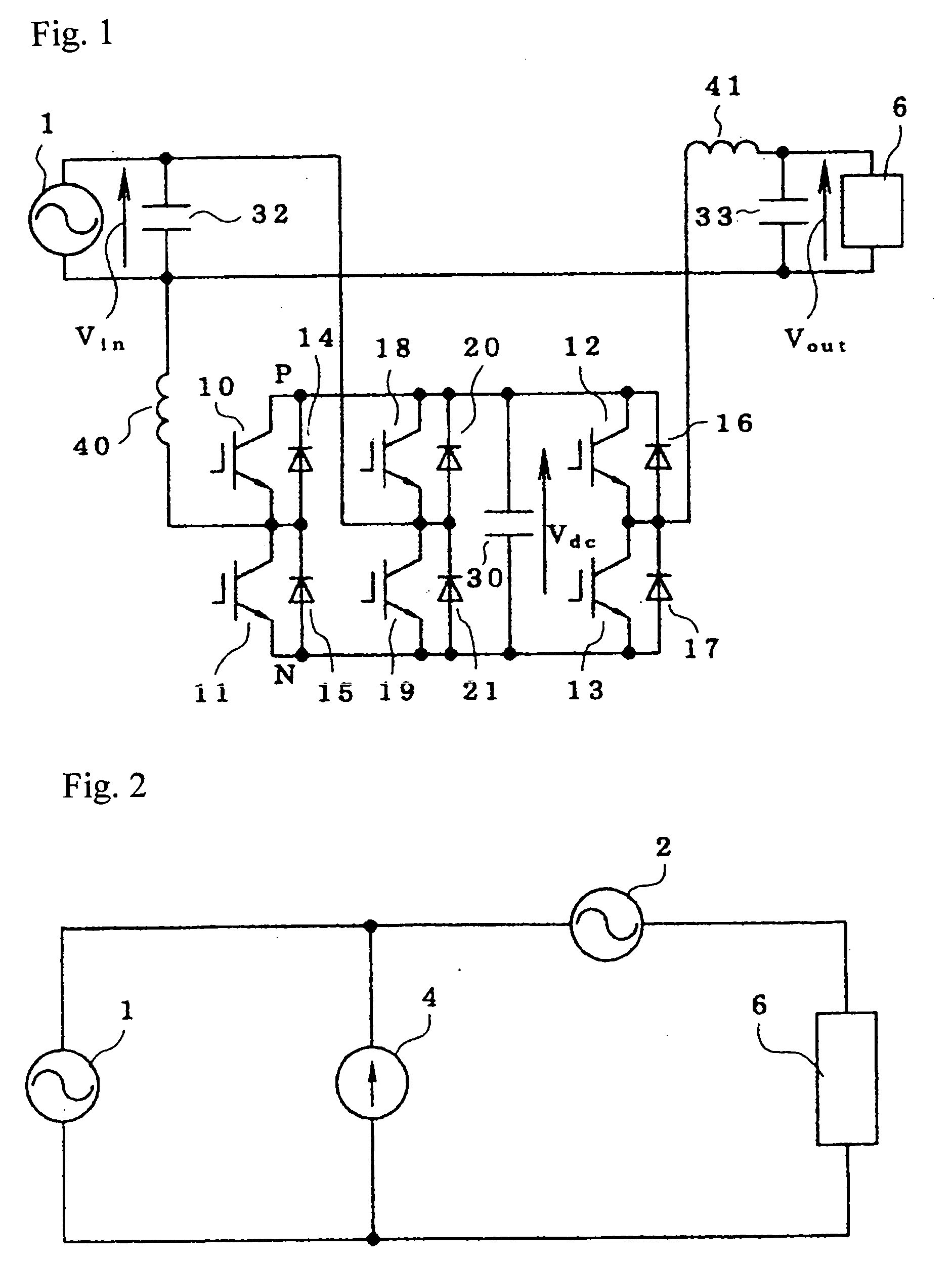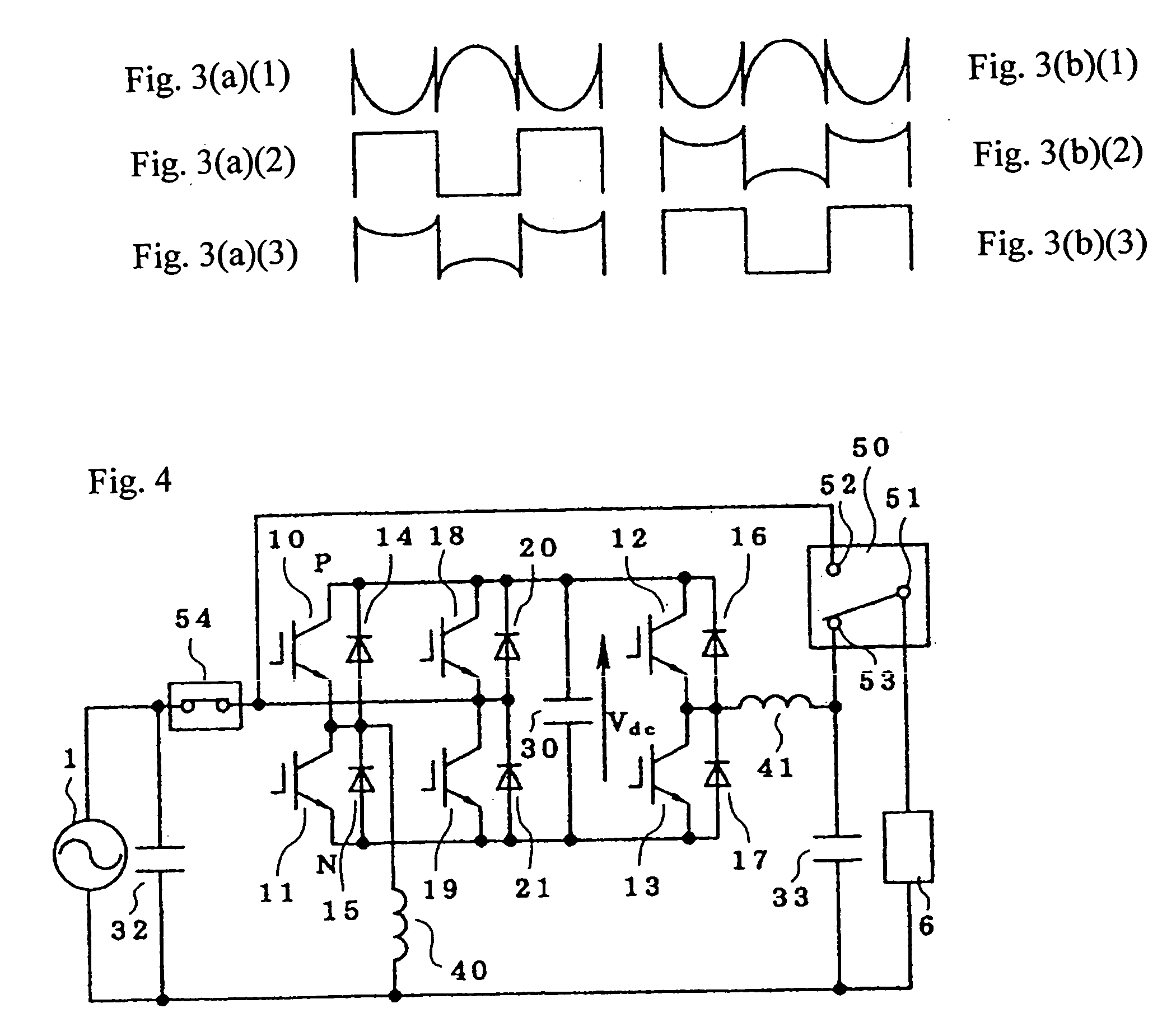Electric power converting device
a technology of converting device and electric power, which is applied in the directions of dc-ac conversion without reversal, emergency power supply arrangement, transportation and packaging, etc., can solve the problems of increasing the running cost of applied elements, and reducing the conversion efficiency
- Summary
- Abstract
- Description
- Claims
- Application Information
AI Technical Summary
Benefits of technology
Problems solved by technology
Method used
Image
Examples
fourth embodiment
[0051] Referring to FIG. 6, the fourth embodiment is identical to the embodiment of FIG. 5, but further includes separate charging and discharging units 62, 63 in place of the common charging and discharging unit 61. The charging unit 62 is connected across the AC power source 1 while the discharging unit 63 is connected between the points P and N, and the energy storing element 60 is connected in parallel to the charging unit 62 and the discharging unit 63. The charging unit 62, discharging unit 63, and the energy storing element 60 also can be added to the embodiment of FIG. 1.
[0052] In operation of the fourth embodiment, the energy is kept charged in the energy storing element 60 by the charging unit 62 under a normal condition of the AC power source 1, while under an abnormal condition of the AC power source 1, for example, at power failure, the energy stored in the energy storing element 60 is supplied to the capacitor 30 via the discharging unit 63. With the capacitor 30 taken...
sixth embodiment
[0057] Referring to FIG. 8, the sixth embodiment is substantially similar to the embodiment of FIG. 1, but it further includes a voltage distinguishing circuit, a changeover switch 90, and another capacitor 31 connected with the capacitor 30. In this embodiment, a series circuit of the first capacitor (electrolytic capacitor) 30 and a fourth capacitor (electrolytic capacitor) 31 (referred to as a “capacitor series circuit”) are connected in parallel to one another. The other end of the AC power source 1 that is not directly connected to the load 6 is connected to a common terminal 91 of the changeover switch 90, which has first and second switching contacts 92, 93, the first switching contact 93 is connected to a series connection point of the third and fourth semiconductor switching elements 18, 19, and the second switching contact 92 is connected to a series connection point of the capacitors 30. To the AC power source 1, a voltage distinguishing circuit 70 for distinguishing whet...
PUM
 Login to View More
Login to View More Abstract
Description
Claims
Application Information
 Login to View More
Login to View More - R&D
- Intellectual Property
- Life Sciences
- Materials
- Tech Scout
- Unparalleled Data Quality
- Higher Quality Content
- 60% Fewer Hallucinations
Browse by: Latest US Patents, China's latest patents, Technical Efficacy Thesaurus, Application Domain, Technology Topic, Popular Technical Reports.
© 2025 PatSnap. All rights reserved.Legal|Privacy policy|Modern Slavery Act Transparency Statement|Sitemap|About US| Contact US: help@patsnap.com



